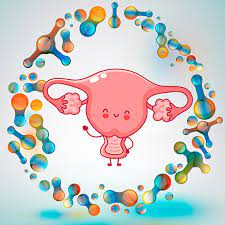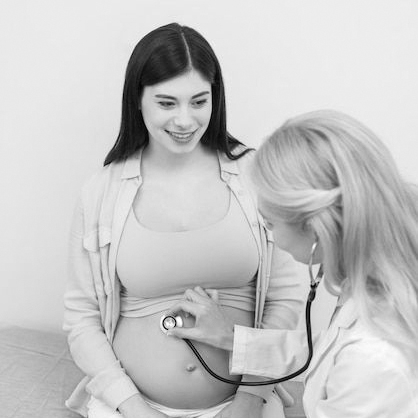It is no secret that healthy vaginal microflora is a prerequisite for maintaining a woman’s reproductive function and successful pregnancy. However, in terms of strains and population density of microorganisms, this is not yet a fully understood area. Based on the latest scientific research, it has been concluded that ovarian hormones, diet, and exercise can regulate the composition and stability of the vaginal microbiome .
The Importance of Microflora for Fertility
It is assumed that the vaginal microbiome is formed mainly by the entry of microbes from the rectum. The vaginal microflora of healthy women consists of a wide variety of anaerobic and aerobic bacteria, among which the genus Lactobacillus predominates . Lactobacillus activity helps maintain the balance of the vaginal microbiome . Their role is fundamental, as they produce 80% of lactic acid and represent a natural barrier against pathogens .
of lactobacilli in the vaginal microflora at least once in their lives . The specialists of the Bogolyuby Medical Center emphasize that vaginal dysbacteriosis is one of the most important risk factors for serious vaginal infections, premature births and perinatal complications. Vaginal bacteriosis and human papillomavirus (HPV) infection are the most common diseases of the genital tract in women. However, vaginal fungal infections (such as candidiasis) and viruses, as well as urinary tract infections are no less dangerous.
What factors influence the vaginal microbiome?
First of all, age, as it is related to estrogen levels and a relative decrease in pH . In prepubertal women, a more alkaline vaginal environment is observed than in fertile women (under the influence of estrogens), with colonization by diphtheroids - Corynebacterium , Staphylococcus , Mycoplasma . However, during the fertile phase, especially in the phase of estrogen and progesterone secretion, the pH decreases and Lactobacillus spp . predominate.
Use of hormonal Contraceptives can also change the temporal dynamics of the vaginal microflora, depending on the hormonal composition of the product. On the other hand, menstrual flow and sexual activity correlate with changes in the vaginal microbiome , destabilizing the concentration of lactobacilli .
postmenopausal women, the decline in estrogen levels again causes the pH to rise , which favors the presence of intestinal bacteria. Several epidemiological studies have shown that smoking is associated with an increased prevalence of bacterial vaginosis . Too frequent use of harsh cleansers, douches and tampons also increases the risk of this disease.
More recently, scientists have taken a closer look at the role of stress on the vaginal microbiome . They found that chronic exposure to psychosocial stress can lead to inhibition of vaginal glycogen deposition under the influence of cortisol. This disrupts the process of normal epithelial maturation, which is crucial for maintaining vaginal homeostasis. Thus, stress is a major risk factor for developing bacterial vaginosis .
The influence of nutrition on vaginal microflora
The quality of vaginal microflora is improved by following a diet enriched with nutrients such as vitamins (A, C, D, E, folic acid), B-carotene and minerals such as iron, calcium and zinc; probiotics . On the other hand, negative factors include: diets with a deficiency of these nutrients; diets that are too high in carbohydrates and/or fats.
It is important to remember that the large intestine functions as an "extra-vaginal reservoir" for lactobacilli and other bacteria. Its microbiological homeostasis plays an important role in vaginal homeostasis as well. This is why taking probiotics and the functionality of the intestine itself are of primary importance for maintaining the vaginal microflora.



















